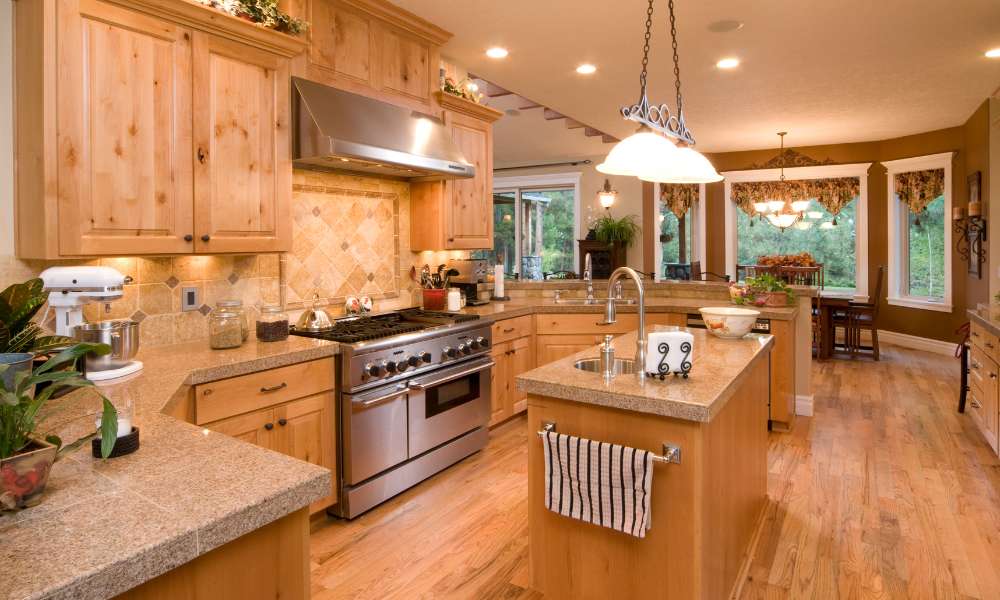Discover the art of maintaining a pristine kitchen space with our comprehensive guide on how to clean wood kitchen cabinets. Regular maintenance not only enhances the aesthetic appeal of your kitchen but also prolongs the lifespan of your cabinetry. By incorporating simple yet effective cleaning techniques, you can effortlessly restore the natural beauty of your wood cabinets while safeguarding them against wear and tear. Dive into our step-by-step instructions and unlock the secrets to achieving gleaming, spotless cabinets that will leave your kitchen shining.
How Often Should I Clean My Wood Kitchen Cabinets?
It is recommended to clean wood kitchen cabinets regularly to maintain their appearance and longevity. A general guideline is to clean them at least once a month, or more frequently if they are heavily used or exposed to grease and food particles. Regular cleaning can help prevent buildup of dirt, grime, and stains that can damage the wood finish over time.
Can I Use Vinegar To Clean Wood Kitchen Cabinets?
Yes, vinegar can be an effective and natural cleaning solution for wood kitchen cabinets. However, it is important to dilute the vinegar with water before using it to prevent any potential damage to the wood surface. A common ratio is one part vinegar to two parts water. This mixture can help remove grease, grime, and build-up on the cabinets without causing harm.
Assessing The Need For Refinishing
Before delving into the cleaning process, it’s crucial to assess whether your wood kitchen cabinets require refinishing. Over time, exposure to grease, moisture, and daily wear can take a toll on the appearance of your cabinets. Begin by inspecting the surface for signs of wear such as scratches, dents, or dullness. If the finish appears faded or damaged, refinishing may be necessary to restore its original luster. Additionally, consider the overall condition of the wood. Are there any areas where the wood has become discolored or warped due to moisture exposure? Identifying these issues early on will help you determine the extent of cleaning and refinishing required to revitalize your cabinets.
Polishing The Wood
To achieve a flawless shine when polishing wood surfaces, it is essential to use the right cleaning products and techniques. Start by dusting off any debris or dirt with a soft cloth or microfiber duster. For wood kitchen cabinets, mix a gentle cleanser with warm water in a spray bottle and lightly mist the surface before wiping it down with a clean cloth. Avoid using harsh chemicals that can damage the wood finish and instead opt for natural alternatives like vinegar or olive oil.
Wiping Down Shelves
Wiping down shelves regularly can also extend the lifespan of your wood kitchen cabinets by preventing wear and tear caused by neglected maintenance. It’s important to pay attention to detail when cleaning shelves, making sure to reach all corners and crevices where dirt can hide. By incorporating this simple yet effective routine into your cleaning regimen, you’ll not only keep your kitchen looking pristine but also protect your investment in high-quality wood cabinets for years to come.
Handling Water Damage
Water damage is a common issue that can affect wood kitchen cabinets, especially those located near sinks or other water sources. If you notice any signs of water damage, such as warping, swelling, or discoloration, it’s essential to address the issue promptly to prevent further damage. Start by drying the affected area thoroughly with a clean, absorbent cloth or towel. If the damage is extensive, you may need to use a fan or dehumidifier to help dry out the wood completely. Once the wood is dry, assess the extent of the damage and determine whether any repairs or refinishing are necessary. In some cases, you may need to sand down the affected area and apply a new finish to restore the appearance of the wood. By promptly addressing water damage, you can prevent it from spreading and ensure the long-term beauty and durability of your wood kitchen cabinets.
Dealing With Grease Buildup
Wood kitchen cabinets can easily accumulate grease buildup over time, especially in areas near the stove and oven. To effectively tackle this greasy residue, begin by mixing a solution of warm water and mild dish soap. Dip a soft cloth or sponge into the soapy water and gently scrub the greasy areas of the cabinets. For stubborn grease, you may need to apply a bit more pressure, but be cautious not to scratch the wood surface. Rinse the cabinets thoroughly with clean water and dry them with a soft towel to prevent water spots.
Removing Surface Grime
Surface grime can dull the appearance of your wood kitchen cabinets, making them appear aged and dingy. Combat this unsightly grime by creating a gentle cleaning solution using equal parts vinegar and water. Vinegar’s natural acidity helps to break down dirt and grime without causing damage to the wood. Dampen a clean cloth with the vinegar solution and wipe down the surfaces of the cabinets, paying special attention to any areas with noticeable buildup. Once the grime has been lifted, rinse the cabinets with water and dry them thoroughly to reveal their natural shine.
Treating Tough Stains
Despite your best efforts, tough stains may occasionally mar the surface of your wood kitchen cabinets. Whether it’s spilled wine, tomato sauce, or coffee, addressing these stains promptly is crucial to prevent them from becoming permanent. For water-based stains, such as coffee or juice, create a paste using baking soda and water. Gently rub the paste onto the stained area with a soft cloth, then wipe it away with a damp cloth. For oil-based stains, like grease or cooking oil, apply a small amount of dish soap directly to the stain and gently scrub with a soft-bristled brush. Rinse the area with water and dry it thoroughly.
Avoiding Damage While Treating Stains
Treating stains on clean wood cabinet in the kitchen requires a delicate touch to avoid causing any damage. One common mistake is using abrasive cleaners, as they can scratch the surface and strip away the finish over time. Instead, opt for gentle cleaning solutions such as a mixture of mild soap and water or specialized wood cabinet cleaners.
Emptying Cabinets For Thorough Cleaning
For a truly thorough cleaning of your wood kitchen cabinets, it’s essential to empty them completely. Remove all dishes, utensils, and food items from the cabinets to provide unrestricted access to every surface. This not only allows you to clean more effectively but also prevents any cleaning solution or water from coming into contact with your belongings. Once the cabinets are empty, follow the aforementioned cleaning steps to remove grease, grime, and stains from both the interior and exterior surfaces. Take this opportunity to also clean the shelves and drawers before returning your items to their rightful places. By emptying your cabinets before cleaning, you can ensure a deep and comprehensive clean that will leave your kitchen looking fresh and organized.
The Final Thought
Maintaining clean wood kitchen cabinets is essential to preserving their beauty and longevity. By following the steps outlined in this guide and using gentle yet effective cleaning solutions, you can keep your cabinets looking like new for years to come. Regular dusting, wiping down with a mild soap solution, and avoiding harsh chemicals will help protect the finish and wood. Remember to also pay attention to the hardware and hinges when cleaning to ensure all parts of the cabinet are well-maintained. With proper care and attention, your wood kitchen cabinets will continue to be a focal point of your kitchen for many years. Start implementing these cleaning tips today for beautifully clean cabinets tomorrow.





